M I X E D M E D I A
Into The Void
An Interview with Chim↑Pom from Smappa!Group
Written by Nicola Trezzi
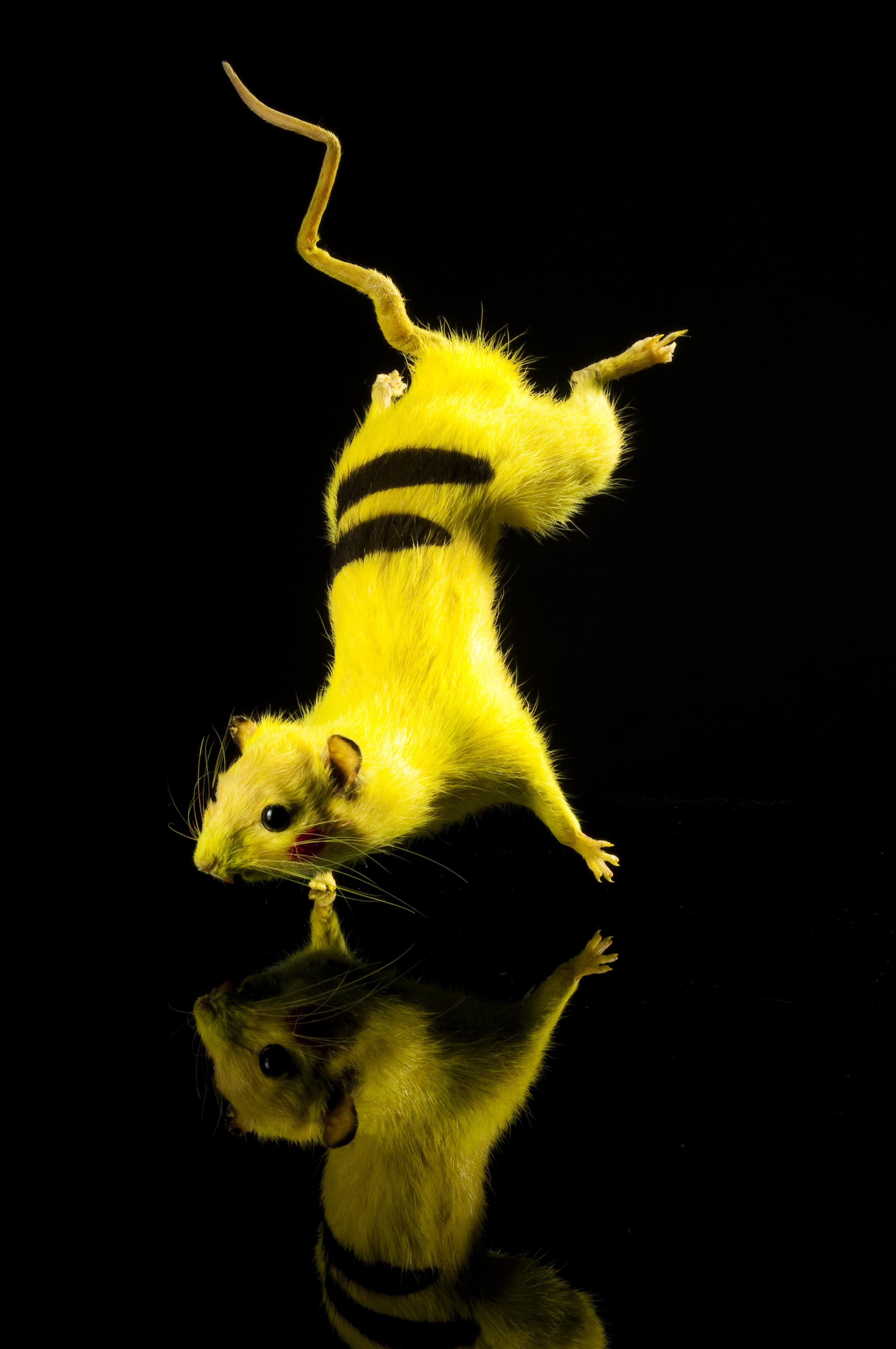
Photo: Yoshimitsu Umekawa © Chim↑Pom.
Courtesy of the artist and MUJIN-TO Production.
In 2011, less than a month after the nuclear meltdown of Fukushima, members of the Tokyo art collective Chim↑Pom from Smappa!Group crossed the barrier and headed into the Exclusion Zone. Dressed in white hazmat suits, the group trudged to a visitor viewing station on a precipice giving a view of the exploded nuclear reactors. There they spray-painted the crimson-red circle of the Japanese flag onto a white cloth, then added three blades to transform the circle into the symbol of radioactivity. One of the members hoisted the flag as it flickered in the staunch wind. The intervention resulted in the video work “Real Times”.
The action is emblematic of Chim↑Pom from Smappa!Group’s collaborative practice which intervenes in social and art world situations to deliver a strong political message, often dripping in black humour and disruptive intent. The group of six artists — Masataka Okada, Ellie, Ryuta Ushiro, Toshinori Mizuno, Motomu Inaoka, and Yasutaka Hayashi — formed in 2005 and began making work dealing with urban reality in Japan. When producing work as Chim↑Pom from Smappa!Group, Ellie says, “One member will tug on another’s rope while another provides an anchor, dragging it along until another fishes it out, pulls it up, and tosses it for another to reel in and wind up. We all carry each other.” Nicola Trezzi interviewed Chim↑Pom from Smappa!Group for ZETTAI about their art practice.
Motomu Inaoka: The way we make work is the same as it always was: we meet with each other a number of times each week, either online or in person, and discuss ideas, decide on a production schedule, and try to keep things moving on time.
We don't do much outsourcing, since there’s the risk that you won’t end up with what you were hoping for — unless you’re able to communicate well enough. Having worked as a team from the beginning, each of us have our own areas of expertise, and we can manage most things even if we lack some skills. When we do outsource, we typically go with friends, or friends of friends, who have the technical skills. Since I’m often really involved in the production side of things, I’ve been helped a lot by my friends and other people I know.
When we first started Chim↑Pom from Smappa!Group, besides the fact that we liked art and wanted to do interesting things, we shared zero background in theory or art education. Over the many years of Chim↑Pom from Smappa!Group, as we’ve pushed ourselves to make work together, time and time again we’ve tested out different ways to divide up the work in order to improve our creative process. In that sense, you could say we have a much clearer division of labour now. And that has made it possible for us to produce high quality work in a shorter period of time. But with that, it’s become challenging for us to make work that better reflects our different personalities.
As far as what you said about the Grand Open exhibition being an expression of Chim↑Pom from Smappa!Group’s versatility, I don’t feel like that’s something we’ve ever come close to achieving, at least not something truly interesting and varied. If we were able to express that kind of “versality” within the bounds of the techniques we’ve developed over the years, that would be exciting as a member of Chim↑Pom from Smappa!Group, to think that we could create something interesting that’s even more intrinsically versatile.
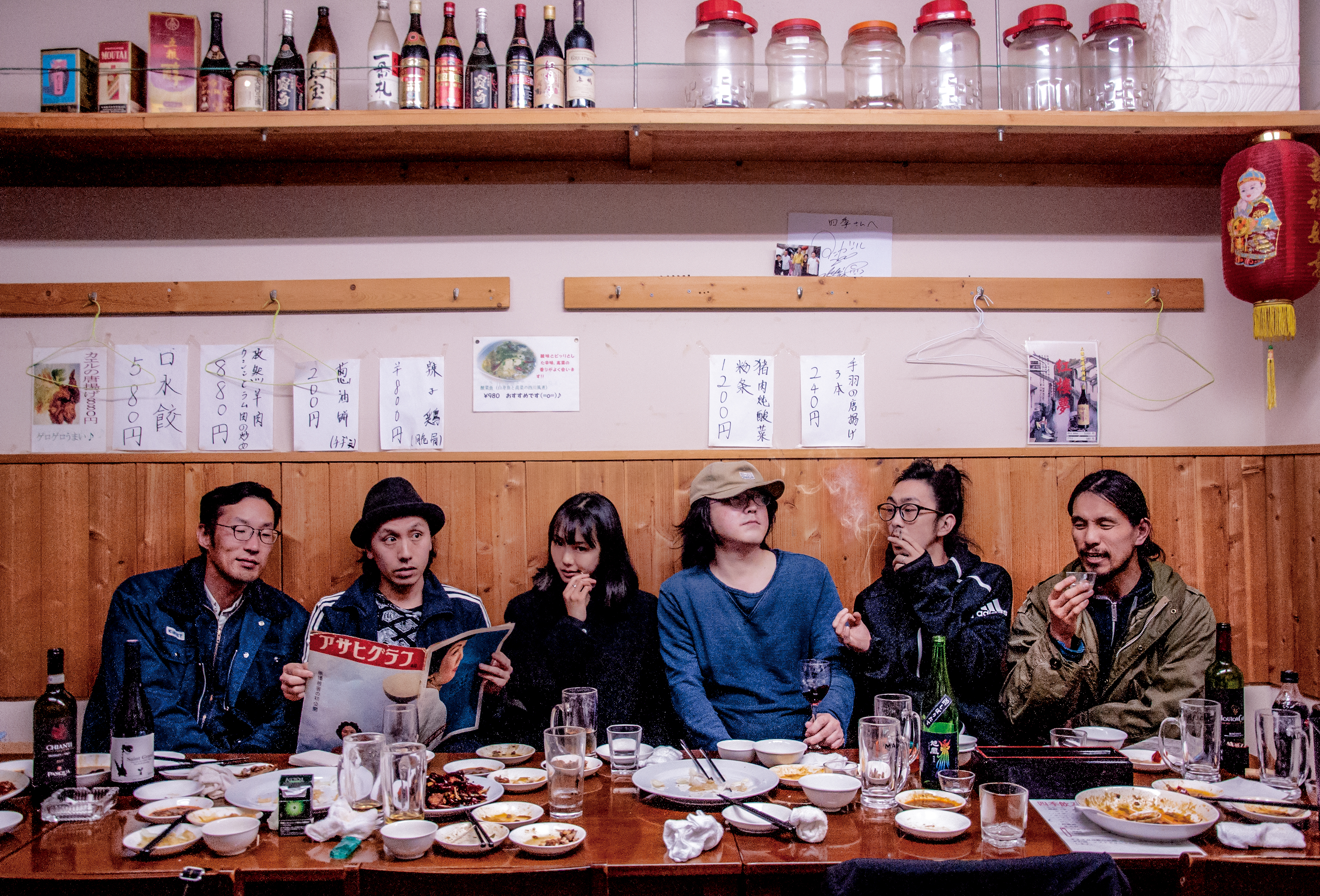
Photo: Seiha Yamaguchi.
Ellie: For me, it’s not at all about my gender — and much much more about who I am as a person. One member will tug on another’s rope while another provides an anchors, dragging it along until another fishes it out, pulls it up, and tosses it for another to reel in and wind up. We all carry each other. There’s a balance of power that has echoed through our relationship over the past 15 years.
NT: In 2015, you initiated “Don’t Follow the Wind”, a long-term international exhibition taking place inside the restricted Fukushima Exclusion Zone. The artworks are exhibited in buildings abandoned by residents and are at present still inaccessible to the public. Members of Chim↑Pom from Smappa!Group actually entered the zone at a time when journalists dared not set foot there. Were you concerned for your health?
Ryuta Ushiro: It was just after the nuclear accident when I first went to that area, what’s now the “Difficult-to-Return Zone”. The feeling was beyond anxiety; it was terrifying. Because in Japan, our image of the long-term health effects of radiation at that time was still strongly tied to Hiroshima and Nagasaki. And then the ghost towns we’d seen in anime and sci-fi suddenly became a reality. It was a frightening experience to see that in person and walk into that zone.
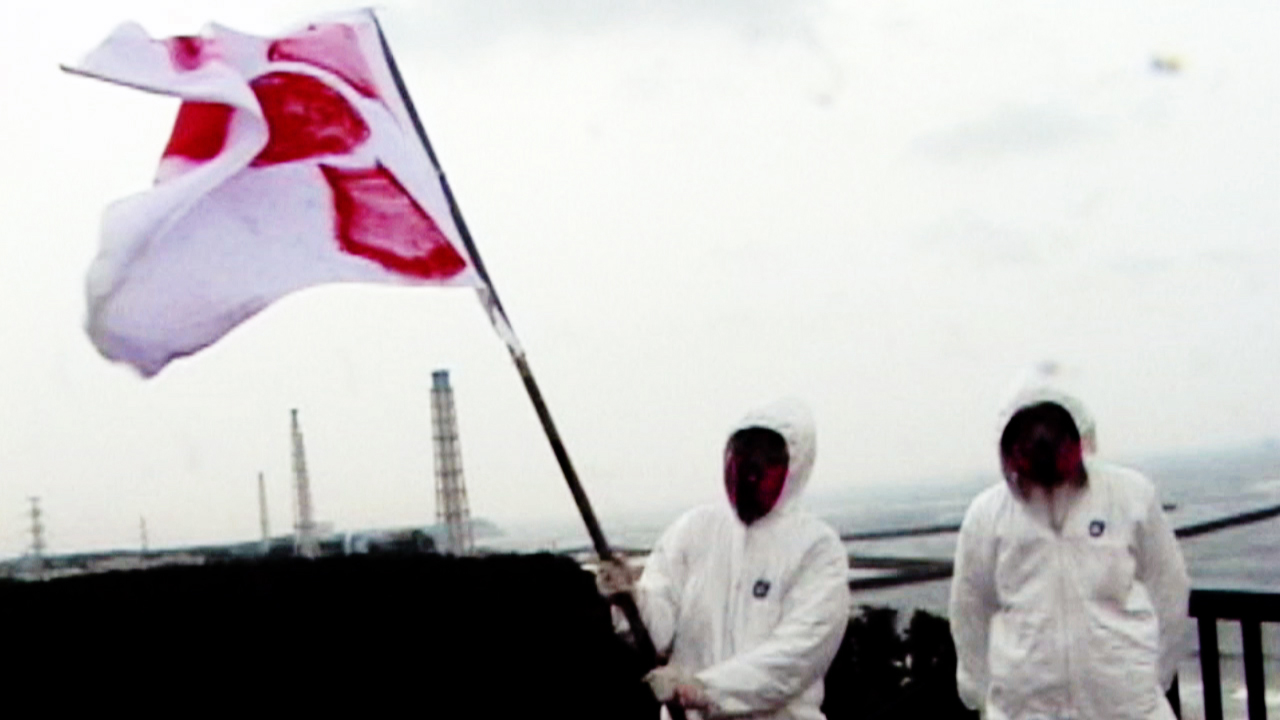
©Chim↑Pom.
Courtesy of the artist, ANOMALY, and MUJIN-TO Production.
Ryuta Ushiro: The disaster, like the tsunami disaster, did not lend itself to a vision of a city that could be rebuilt in a few years. In 2011, you saw a lot of writers respond to what happened, to the loss and the void of the city and its residents, but since I went back to that area every few months, it was something that stayed on my mind for a much longer period of time. Following that, the notion of time became a theme, and I saw the need for an international approach to what was not simply a domestic problem, and then “Don't Follow the Wind” came about. I think I was standing in line at the Natural History Museum in New York when the idea first popped into my head.
From there, we selected three international curators and set up a planning committee for the project. But we were turned away by every art institution we approached, and we were told by two different foundations that anything dealing with Fukushima was inherently political and therefore problematic. But despite all that, we’re grateful that someone was able to raise funds (which we then donated to DFW) to purchase our work, and above all we’re grateful for all the support we received from local people (although we couldn’t help but feel seized by despair over Japanese art institutions at the same time).
Since the start of the project five years ago, and having passed through five different venues, the exhibition has continued to change. It’s been affected by the nature and the situation in the Difficult-to-Return Zone. One of the works was lost — destroyed along with the venue when it was demolished. As an exhibition that’s inaccessible to humans, the wildlife has also had a major impact, but I’m always intrigued by the way that the flora and fauna approach the exhibition when I go in for maintenance. There’s also been significant changes in the area’s ecology.
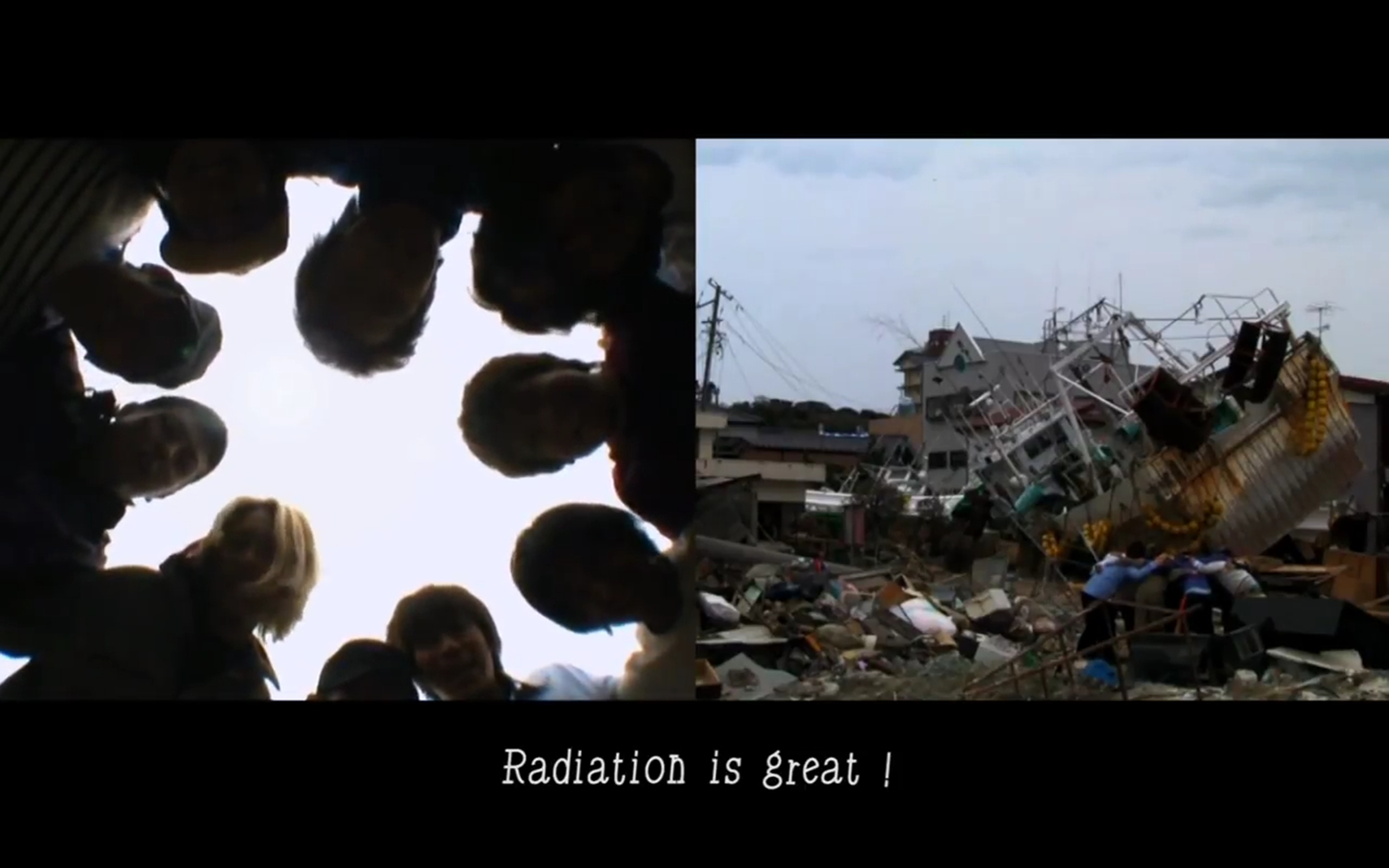
KI-AI 100, 2011.
© Chim↑Pom.
Courtesy of the artist,
ANOMALY, and MUJIN-TO Production.
Yasutaka Hayashi: We’ve already done artist residencies in different cities and places outside of Tokyo. Each setting has its own unique characteristics, but I believe we’ve been able to create something truly unique to Chim↑Pom from Smappa!Group. Of course, all of us are currently living in Tokyo, so we do stage a lot of our work here. But I think that simply reflects the fact that most of our connections and relationships are here, which is critical to creating the work. To put it another way, I think we could make work that’s unique to Chim↑Pom from Smappa!Group even in the desert or the Antarctic, just as long as we’re able to find similar points of connection.
NT: In Tokyo, you have done projects, such as “Ningen Restaurant”, in which you mix the notion of community with that of gentrification in a way that seems detached from the cliché of political or community-based art. Can you explain the actual presence of this project in the “real world” (not the art world)?
Ryuta Ushiro: We don’t really think about the real world and the art world as two separate things. Of course, there’s a world of the unreal that’s necessary for art, and depending on the work, we might make use of certain sorts of methods. But I can’t remember us ever even talking about our work or what we do in that way, making a clear distinction between those two worlds. Anyways, looking at our habits up until now, the trend it seems is that we’ve been overwhelmingly drawn towards the real world. Maybe that’s because of what we present through our work: not providing answers to problems in art or society, but rather focusing on the individual at the mercy of this life and reality, in which all sorts of things happen.

Making the Sky of Hiroshima “PIKA!”, 2009.
© Chim↑Pom.
Photo: Bond Nakao.
Courtesy of the artist, ANOMALY, and MUJIN-TO Production.
Ryuta Ushiro: Since its formation and still today, “Super Rat” has always been a self-portrait. No matter what happens with the city or society, there’s our ability to adapt and survive in new environments that we share with rats. While we’ve exhibited this work around the world, as you mention, everyone who sees the rats — and the fundamental questions they pose — seems to react in the same way: with sympathy and fright, disgust and familiarity. You get the sense that when it comes to how humans feel about rats, we’re all of the same mind.

Chim↑Pom.
SUPER RAT (2006, 2011).
© Chim↑Pom.
Courtesy of the artist, ANOMALY, and MUJIN-TO Production.
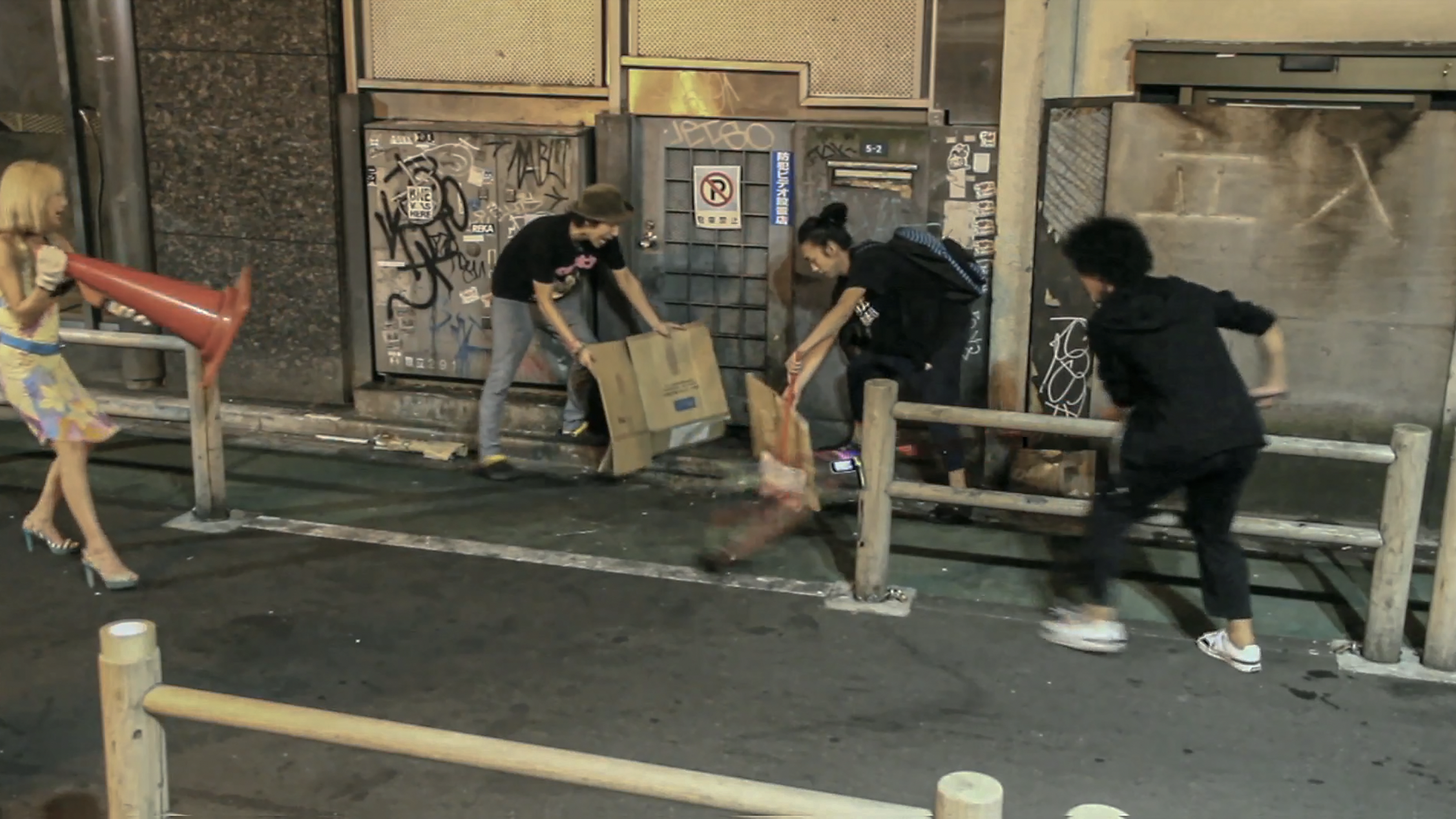


Masataka Okada: It was a big deal that we first learned about the genre of contemporary art through Aida. For young people in Japan around the year 2000, there weren’t opportunities to learn about contemporary art without going to art school. So that was something of a miracle. Before Chim↑Pom from Smappa!Group, we were regular people and just wanted to do something interesting, so maybe in some ways it was inevitable that our entrance into contemporary art would be through Makoto Aida.
Chim↑Pom from Smappa!Group was first formed as a band, and it was mainly Ushiro and Hayashi who were doing music together. We all had only just met at that time, so we weren’t really sure what Chim↑Pom from Smappa!Group meant, and I remember trying to figure that out together through the process of making work. To be honest, none of us thought we’d still be active more than 15 years later, and we’ve also let it slide the fact that “Chim↑Pom” is a pretty embarrassing name in Japan [chimpo is slang for penis]. Today you could say it’s a remnant of the frame of mind we were in back then.
NT: Although you define yourself an “artist collective”, your work has gone way beyond art-making to include exhibition-making, curating, and also activism. How do you frame your expanded practice? Do you see it under the rubric of “art-making”?
Ryuta Ushiro: “Artist collective” is simply a title, so it doesn’t define what Chim↑Pom from Smappa!Group is. As you’ve pointed out, our activities aren’t confined to any single form. We’re six people who have drastically different sets of values, which is to say that it’s not like “activism” drives us, and it’s not like we’re married to the “art exhibition” format. We make visual art, and we create platforms for music and the performing arts, for fashion, demonstrations, restaurants, and the list goes on. But the way we organize parties and the collaborations doesn’t neatly fit into the frame of “curation” as defined by the art world. We’ve also run stores and published lots of books.
Objectively speaking, I guess it’s possible to call all these different activities “art-making”, but that’s not actually how it is for us. One could say that it’s art or what have you, but there’s never going to be a definitive way to package what we do as part of Chim↑Pom from Smappa!Group — as “Chim↑Pom from Smappa!Group professionals” engaged in the ongoing creation of this organism, comprised of these kind of life-long amateurs... Going back to the question, subjectively speaking, it feels more accurate to say we’re engaged in “Chim↑Pom-making”.

